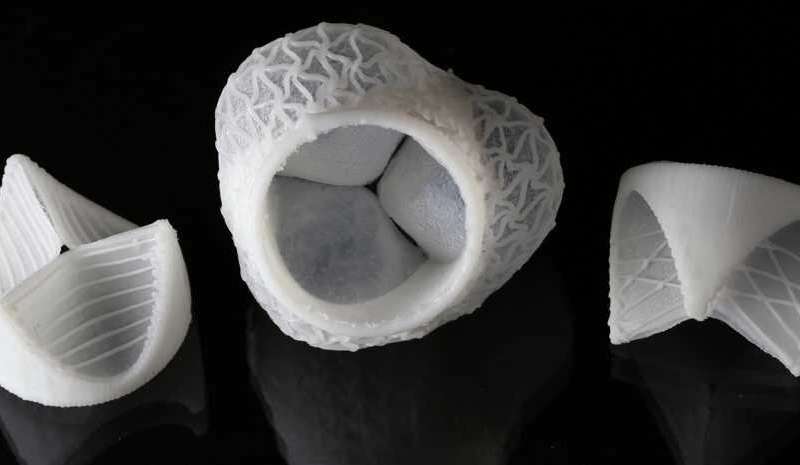With the average age of the population on the rise, aortic heart valve replacement is being growingly requested. An expected 850,000 patients will need experience heart valve replacements in 2050. Researchers are anticipating such demand with a new alternative.
A group of scientists at ETH Zurich and the South African company Strait Access Technologies are working with 3-D printers in order to manufacture custom-made artificial heart valves, made out of silicone and created in just an hour.
Working with silicone valves means tailoring it more precisely to the patient. Researchers first determine the shape and size of the heart by using computer tomography or magnetic resonance imaging. Then, they can print a valve that is a perfect match to the heart chamber.
In order to avoid any problems with the implant, researchers create a digital model and a computer simulation with a set of images. Safety is also guaranteed by the material compatibility with the human body, as blood can flow normally through the artificial valve.

The 3D-printed valves enable mechanical matching with the host biological tissue. Credit: Fergal Coulter / ETH Zurich
The new silicon valves would allow surgeons to stop using conventional implants, based on animal tissues or polymers combined with metal frames. They have a rigid shape and meant for patients the need to take life-long immunosuppressants to prevent the body from rejecting them.
“The replacement valves currently used are circular, but do not exactly match the shape of the aorta, which is different for each patient,” says Manuel Schaffner, one of the study’s lead authors and former doctoral student of André Studart, Professor for Complex Materials at ETH.
While the conventional valves take several days to be manufactured, the silicone ones can be done in about an hour thanks to the 3-D printers. Scientists need to create a negative impression of the valve, spraying the ink onto it. Then, a printer tough deposits silicone paste to print specific patterns on their surface.
Scientists expect to extend the life of the replacement valves to 10-15 years, which is how long current models last in patients before they need to be exchanged. Nevertheless, it would take at least 10 years before the new artificial valves come into clinical use, as they have to go through clinical trials first.
“It would be marvelous if we could one day produce heart valves that last an entire lifetime and possibly even grow along with the patient so that they could also be implanted in young people as well,” said Schaffner.
The study was published in the journal Matter.










